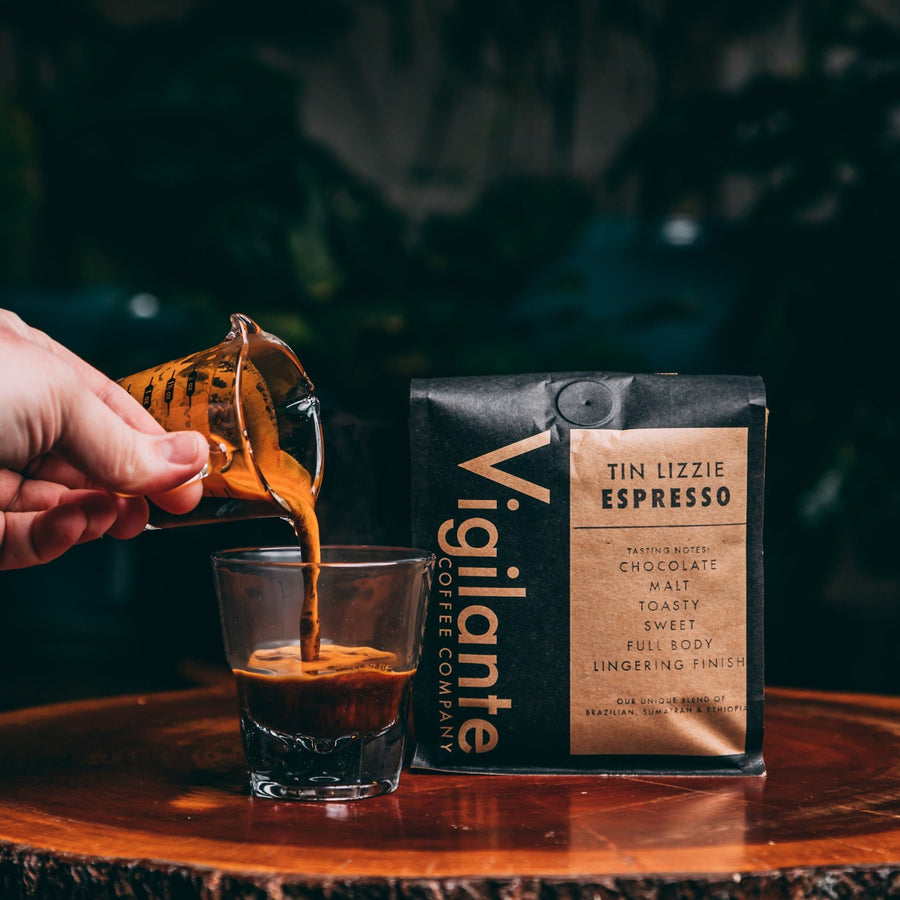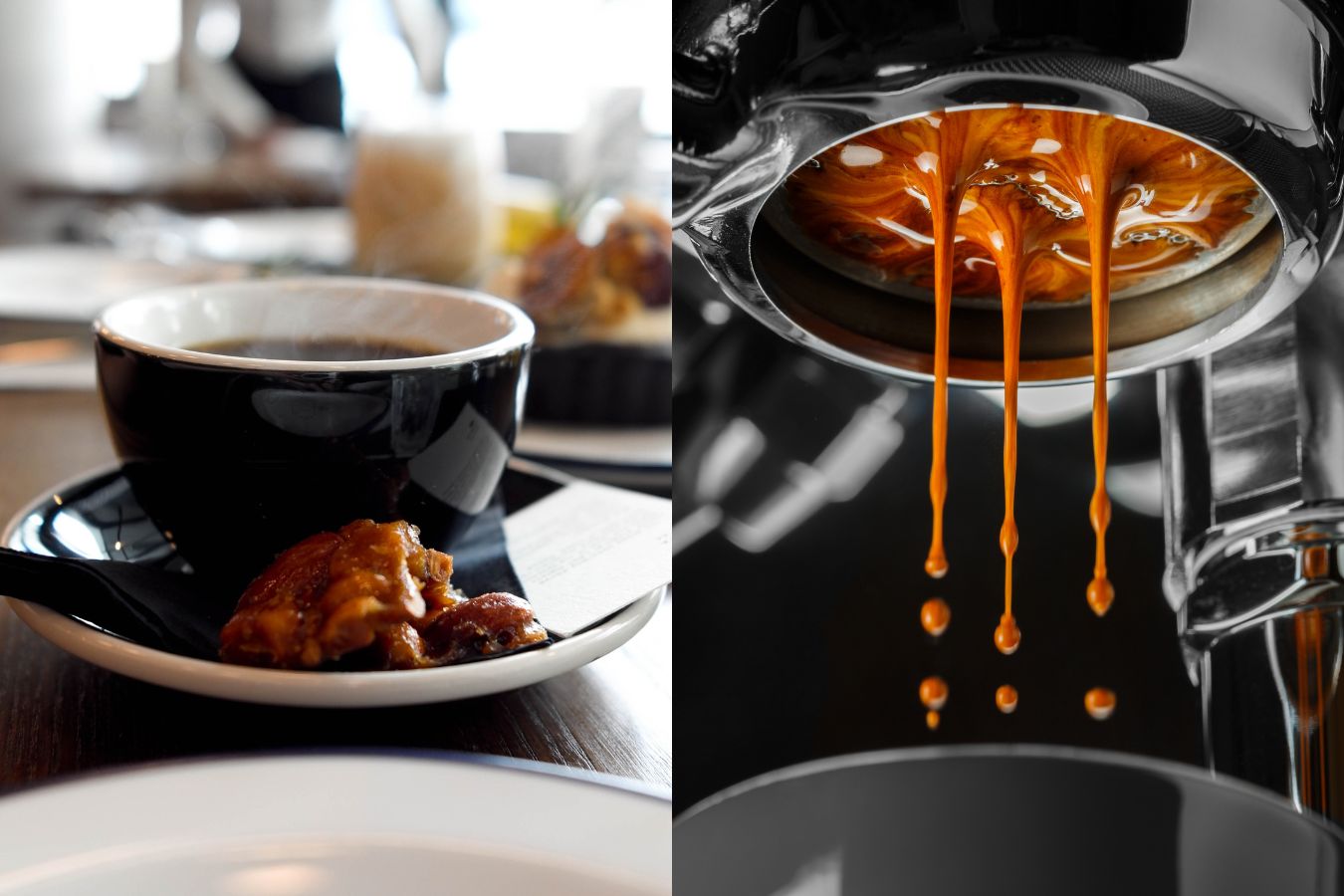Exploring the Rich Tastes of Coffee Beans: a Deep Study Coffee and Blended Coffee Beans
When you check out the rich flavors of coffee beans, you uncover an intricate globe where each range brings its own personality to your mug. As you browse with the art of espresso and the creative thinking behind mixed coffees, you'll begin to value the nuances that make each sip distinct.
The Origins of Coffee Beans: Discovering Terroir and Flavor Profiles
When you take a sip of coffee, you're not simply appreciating a drink; you're experiencing a rich tapestry of tastes formed by the beans' origins. Each area produces one-of-a-kind flavor accounts influenced by environment, altitude, and dirt. As an example, beans from Ethiopia frequently break with bright, fruity notes, while those from Colombia often tend to provide a well balanced, nutty sweetness.
As you explore various origins, you'll see how terroir-- the ecological variables affecting a plant-- plays a vital function - Single Origin Espresso. The very same coffee variety can taste dramatically different relying on where it's expanded
When you consider these aspects, you begin to value the complexity behind your cup. Each sip narrates of the land and the farmers who nurtured the beans. Next time you indulge, believe concerning the journey your coffee took before it reached your hands, and enjoy those complex tastes that mirror its beginning.
Comprehending Coffee: The Art and Scientific Research Behind the Mixture
When you think of coffee, it's not almost the strong flavor; it's also about the techniques that bring it to life. Understanding how various prep work techniques effect preference can transform your developing experience. Let's check out the details of espresso preparation and uncover the distinct flavor accounts that make each mug unique.
Coffee Preparation Techniques
Espresso prep work is both an art and a scientific research, integrating precise strategies with a deep understanding of coffee. To begin, you'll wish to select top notch, newly roasted beans and grind them carefully for suitable extraction (Single Origin Espresso). The grind size is important; too crude, and your espresso will be weak, also fine, and it'll be bitter
Following, tamp the premises evenly in the portafilter to guarantee consistent extraction. When you secure it into the machine, go for a brewing temperature level between 190 ° F and 205 °
F.As you pull the shot, look for the best extraction time-- around 25-30 secs. The result needs to be an abundant, creamy coffee with a stunning layer of crema on the top. With practice, you'll grasp these techniques.
Flavor Accounts Discussed
The globe of coffee supplies an abundant tapestry of flavor profiles that can boost your coffee experience. Light roasts frequently showcase brilliant level of acidity and lively tastes, while dark roasts existing much deeper, bolder tones.
Understanding these profiles aids you pick the ideal coffee for your taste. Experimenting with different blends can reveal surprising combinations. A well-crafted mix may balance the brilliant notes of an Ethiopian bean with the rich, chocolatey touches of a Brazilian bean. Accept the journey of finding coffee's varied flavors, and you'll change your coffee routine into an interesting experience.
Handling Techniques: Exactly How They Impact Flavor and Aroma
While it might seem that the origin of coffee beans is one of the most substantial consider determining their taste and fragrance, the processing methods made use of post-harvest play a similarly essential role. You'll locate that these approaches can considerably change the final preference profile of your mug.
As an example, the washed process removes the fruit from the beans prior to fermentation, commonly resulting in a cleaner, brighter taste. At the same time, the natural procedure leaves the fruit intact throughout drying, leading to a sweeter, fruitier profile.
Other approaches, like honey processing, strike a balance, enabling some fruit mucilage to remain, supplying a distinct intricacy.
Each processing strategy communicates with the beans' inherent characteristics, boosting or silencing details flavors and scents. When you drink that coffee or mixed coffee, bear in mind that the journey from cherry to cup is affected not simply by origin but likewise by just how those beans were processed.
Toasting Methods: Opening the Complete Potential of Coffee Beans
Roasting methods are essential for exposing the complete possibility of coffee beans, as they transform raw, eco-friendly beans right into the aromatic, tasty coffee you appreciate. The selection of roasting method-- light, medium, or dark-- substantially influences flavor profiles. Light roasts preserve the beans' all-natural acidity and fruity notes, while tool roasts balance sweetness and splendor. Dark roasts, on the other hand, stress vibrant, smoky flavors.
A slower roast at reduced temperatures allows for intricate tastes to develop, while a quicker roast can magnify bitterness. By understanding these strategies, you'll expose a world of taste, elevating your coffee experience to brand-new elevations.
The Magic of Blended Coffee: Creating Unique Taste Experiences
Producing a distinct flavor experience with mixed coffee can transform your early morning ritual right into an expedition of taste. By combining various beans from various areas, you can reveal a harmony of flavors that boost your cup to new elevations. Each blend deals an unique profile, stabilizing acidity, sweet taste, and body to develop something genuinely special.
When you select a mix, you're not just selecting a coffee; you're choosing a trip across diverse landscapes and societies. Exploring with various combinations permits you to uncover your individual faves, whether you take pleasure in fruity notes or rich, chocolatey undertones.

Tasting Notes: Identifying the Nuances in Your Mug
As you sip your coffee, you might discover a range of flavors dancing on your taste, each exposing the intricacies of the beans. You may taste the brilliant level of acidity reminiscent of citrus or the deep, abundant notes comparable to dark chocolate. The sweetness might stimulate honey or sugar, stabilizing the overall profile beautifully.
Pay interest to the body of the coffee-- does it feel ventilated and light, or is it complete and luscious? The finish, too, provides hints; a sticking around aftertaste might mean nuttiness or flower touches.

Don't fail to remember to check out the distinct attributes of various origins, as each region passes on unique flavors - Single Origin Espresso. For example, Ethiopian coffees typically present fruity notes, while Colombian beans might showcase a more spherical sweet taste. By recognizing these subtleties, you'll grow your admiration for each and every cup, elevating your coffee experience to brand-new heights

Developing Approaches: Optimizing Taste Extraction for Every Bean
When you discover the numerous brewing methods, you'll uncover that each method can considerably impact the taste profile of your coffee. From French press to pour-over, each approach essences various substances, boosting or muting specific notes. As an example, utilizing a French press permits oils to stay in the brew, producing a richer taste, while pour-over stresses clarity and illumination.
Temperature and grind dimension also play important duties. A coarser grind works best for chilly brews, while a fine work is suitable for espresso. Exploring with water temperature-- in between 195 ° F and 205 ° F-- can disclose concealed tastes, as well.
Do not fail to remember concerning steeping time; a fast extraction can result in sour notes, while over-extraction may produce anger. By changing these variables, you can optimize flavor removal and truly raise your coffee experience. Appreciate the journey of discovering what approach best suits your palate!
Frequently Asked Questions
What Is the Ideal Water Temperature for Brewing Coffee?
The optimal water temperature level for developing coffee's between 195 ° F and 205 ° F. If you utilize water that's too hot, you'll over-extract flavors; SOE also cool, and you will not remove sufficient. Goal for that pleasant place for the finest brew!
Exactly How Does Grind Dimension Influence Coffee Taste?
Grind size considerably affects coffee taste. Finer grinds essence a lot more flavors and oils, resulting in a bolder taste, while coarser grinds return a lighter taste. Adjusting grind dimension helps you attain your wanted coffee account.
Are There Health And Wellness Perks Linked With Alcohol Consumption Coffee?

What Is the Difference Between Arabica and Robusta Beans?
Arabica beans are smoother and sweeter, frequently featuring fruity tastes, while robusta beans are stronger with a bitter taste and greater high levels of caffeine web content. You'll observe these differences in aroma and developing experience.
Just How Can I Shop Coffee Beans for Freshness?
To store coffee beans for quality, maintain them in a closed container, away from warmth, wetness, and light. If you only grind what you need right prior to brewing., you'll maintain their taste longer.
Checking Out the Rich Tastes of Coffee Beans: a Deep Dive Into Espresso and Blended Coffee Beans.
When you explore the abundant flavors of coffee beans, you uncover a complicated world where each selection brings its very own character to your mug.When you take a sip of coffee, you're not just taking pleasure in a drink; you're experiencing an abundant tapestry of flavors formed by the beans' origins.Roasting strategies are essential for exposing the full potential of coffee beans, as they transform raw, environment-friendly beans right into the aromatic, flavorful coffee you appreciate.As you sip your coffee, you could observe a spectrum of tastes dancing on your palate, each disclosing the complexities of the beans.
 Barret Oliver Then & Now!
Barret Oliver Then & Now! Devin Ratray Then & Now!
Devin Ratray Then & Now! Lark Voorhies Then & Now!
Lark Voorhies Then & Now! Shannon Elizabeth Then & Now!
Shannon Elizabeth Then & Now! Ryan Phillippe Then & Now!
Ryan Phillippe Then & Now!